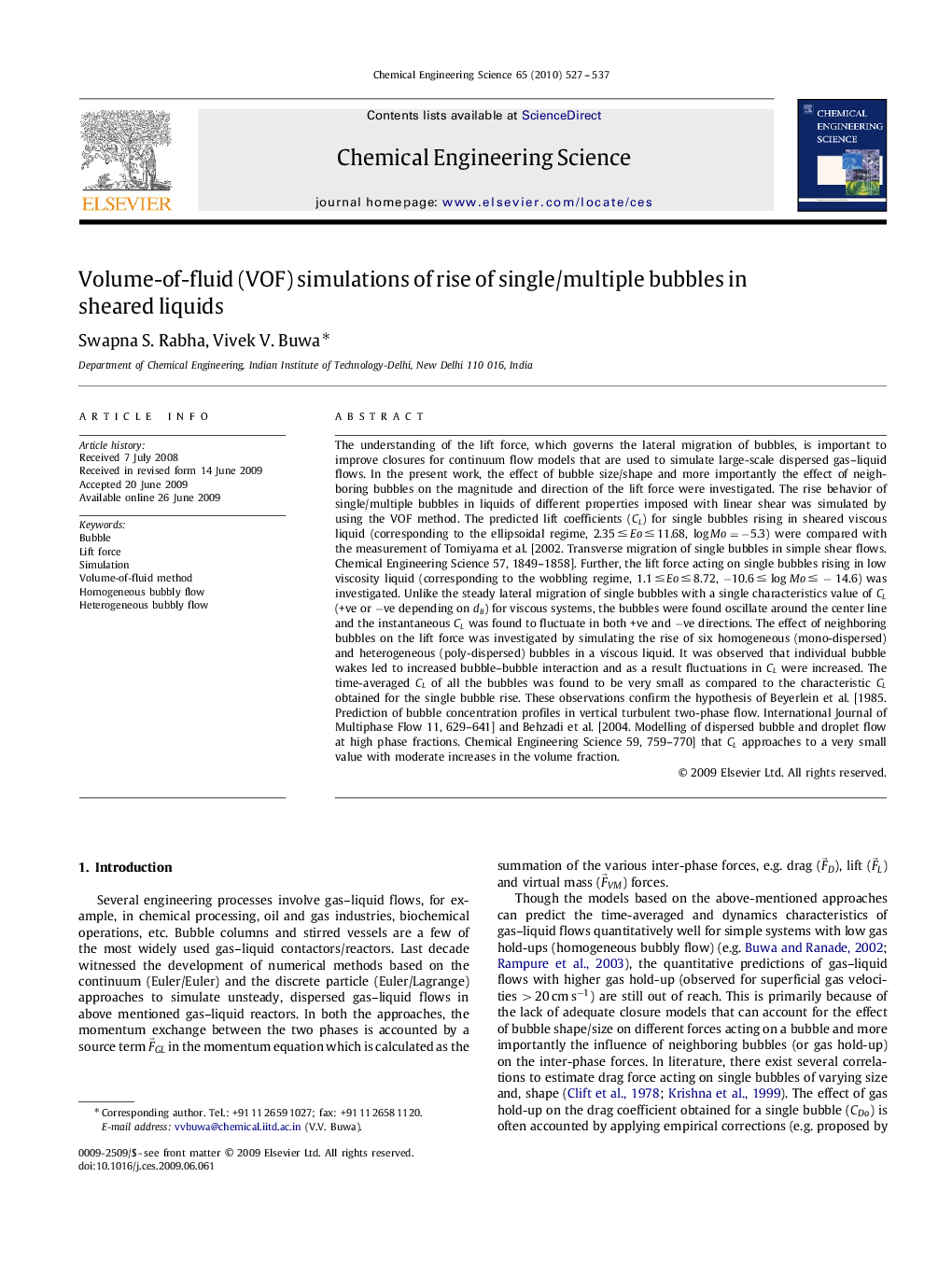| Article ID | Journal | Published Year | Pages | File Type |
|---|---|---|---|---|
| 157737 | Chemical Engineering Science | 2010 | 11 Pages |
The understanding of the lift force, which governs the lateral migration of bubbles, is important to improve closures for continuum flow models that are used to simulate large-scale dispersed gas–liquid flows. In the present work, the effect of bubble size/shape and more importantly the effect of neighboring bubbles on the magnitude and direction of the lift force were investigated. The rise behavior of single/multiple bubbles in liquids of different properties imposed with linear shear was simulated by using the VOF method. The predicted lift coefficients (CLCL) for single bubbles rising in sheared viscous liquid (corresponding to the ellipsoidal regime, 2.35≤Eo≤11.682.35≤Eo≤11.68, log Mo =−5.3) were compared with the measurement of Tomiyama et al. [2002. Transverse migration of single bubbles in simple shear flows. Chemical Engineering Science 57, 1849–1858]. Further, the lift force acting on single bubbles rising in low viscosity liquid (corresponding to the wobbling regime, 1.1≤Eo≤8.721.1≤Eo≤8.72, -10.6≤logMo≤-14.6) was investigated. Unlike the steady lateral migration of single bubbles with a single characteristics value of CLCL (+ve or −ve depending on dBdB) for viscous systems, the bubbles were found oscillate around the center line and the instantaneous CLCL was found to fluctuate in both +ve and −ve directions. The effect of neighboring bubbles on the lift force was investigated by simulating the rise of six homogeneous (mono-dispersed) and heterogeneous (poly-dispersed) bubbles in a viscous liquid. It was observed that individual bubble wakes led to increased bubble–bubble interaction and as a result fluctuations in CLCL were increased. The time-averaged CLCL of all the bubbles was found to be very small as compared to the characteristic CLCL obtained for the single bubble rise. These observations confirm the hypothesis of Beyerlein et al. [1985. Prediction of bubble concentration profiles in vertical turbulent two-phase flow. International Journal of Multiphase Flow 11, 629–641] and Behzadi et al. [2004. Modelling of dispersed bubble and droplet flow at high phase fractions. Chemical Engineering Science 59, 759–770] that CLCL approaches to a very small value with moderate increases in the volume fraction.
